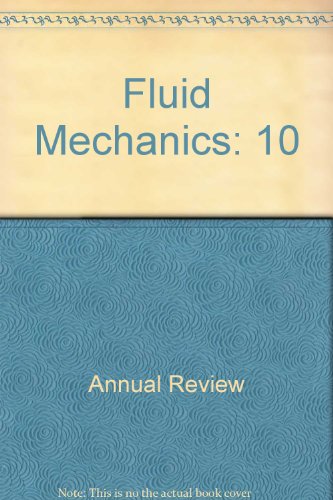Rotating Horizontal Convection
IF 30.2
1区 工程技术
Q1 MECHANICS
引用次数: 5
Abstract
Global differences of temperature and buoyancy flux at the ocean surface are responsible for small-scale convection at high latitudes, global overturning, and the top-to-bottom density difference in the oceans. With planetary rotation the convection also contributes to the large-scale horizontal, geostrophic circulation, and it crucially involves a 3D linkage between the geostrophic circulation and vertical overturning. The governing dynamics of such a surface-forced convective flow are fundamentally different from Rayleigh–Bénard convection, and the role of buoyancy forcing in the oceans is poorly understood. Geostrophic balance adds to the constraints on transport in horizontal convection, as illustrated by experiments, theoretical scaling, and turbulence-resolving simulations for closed (mid-latitude) basins and an annulus or reentrant zonal (circumpolar) channel. In these geometries, buoyancy drives either horizontal mid-latitude gyre recirculations or a strong Antarctic Circumpolar Current, respectively, in addition to overturning. At large Rayleigh numbers the release of available potential energy by convection leads to turbulent mixing with a mixing efficiency approaching unity. Turbulence-resolving models are also revealing the relative roles of wind stress and buoyancy when there is mixed forcing, and in future work they need to include the effects of turbulent mixing due to energy input from tides. Expected final online publication date for the Annual Review of Fluid Mechanics, Volume 54 is January 2022. Please see http://www.annualreviews.org/page/journal/pubdates for revised estimates.旋转水平对流
海洋表面温度和浮力通量的全球差异是高纬度小规模对流、全球翻转和海洋自上而下密度差异的原因。随着行星旋转,对流也有助于大规模的水平地转环流,它关键涉及地转环流和垂直翻转之间的三维联系。这种表面强迫对流的控制动力学与Rayleigh–Bénard对流有根本不同,浮力强迫在海洋中的作用也鲜为人知。地转平衡增加了对水平对流传输的限制,如封闭(中纬度)盆地和环形或重入纬(环极)通道的实验、理论定标和湍流解析模拟所示。在这些几何形状中,除了倾覆之外,浮力还分别驱动水平的中纬度环流或强烈的南极绕极流。在大瑞利数下,对流释放的可用势能导致湍流混合,混合效率接近一。湍流解析模型还揭示了当存在混合强迫时风应力和浮力的相对作用,在未来的工作中,它们需要包括潮汐能量输入引起的湍流混合的影响。《流体力学年度评论》第54卷预计最终在线出版日期为2022年1月。请参阅http://www.annualreviews.org/page/journal/pubdates用于修订估算。
本文章由计算机程序翻译,如有差异,请以英文原文为准。
求助全文
约1分钟内获得全文
求助全文
来源期刊
CiteScore
54.00
自引率
0.40%
发文量
43
期刊介绍:
The Annual Review of Fluid Mechanics is a longstanding publication dating back to 1969 that explores noteworthy advancements in the field of fluid mechanics. Its comprehensive coverage includes various topics such as the historical and foundational aspects of fluid mechanics, non-newtonian fluids and rheology, both incompressible and compressible fluids, plasma flow, flow stability, multi-phase flows, heat and species transport, fluid flow control, combustion, turbulence, shock waves, and explosions.
Recently, an important development has occurred for this journal. It has transitioned from a gated access model to an open access platform through Annual Reviews' innovative Subscribe to Open program. Consequently, all articles published in the current volume are now freely accessible to the public under a Creative Commons Attribution (CC BY) license.
This new approach not only ensures broader dissemination of research in fluid mechanics but also fosters a more inclusive and collaborative scientific community.

 求助内容:
求助内容: 应助结果提醒方式:
应助结果提醒方式:


